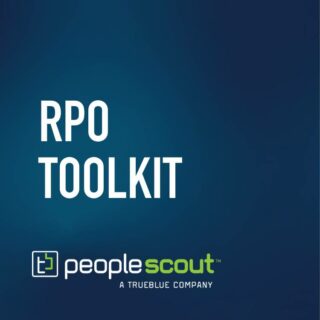By Amelia Krol, Business Analytics Lead
While navigating through high-volume recruitment processes, organisations often find themselves overwhelmed by the number of applications for a multitude of positions, ranging from entry-level roles to specialist positions. This can be a costly and time-consuming process that can damage the candidate experience and doesn’t guarantee candidate quality. This is where predictive analytics steps in, transforming the recruitment landscape.
Driven by advanced data analysis techniques and machine learning, predictive analytics offers a strategic advantage in managing high volumes of roles as well as ensuring the right fit.
How Does Predictive Analytics in Recruitment Work?
Predictive analytics involves the use of historical data, such as applicant resumes or CVs, interview feedback, performance data, and employee tenure to create models that predict future candidate success. Predictive analytics finds patterns and correlations within this data to identify characteristics that lead to successful hires. These indicators could include specific skills, educational background, work experience, and even personality traits that align with the company culture. This data-driven approach ensures a higher standard of candidate quality, as recruiters are guided towards individuals whose attributes align seamlessly with the organisation’s culture and role requirements.
Furthermore, this strategic deployment of predictive analytics doesn’t merely benefit the organisation; it elevates the candidate experience by matching applicants with roles that resonate with their skills and aspirations. As a result, candidates feel more engaged and valued throughout the recruitment journey, culminating in enhanced hiring outcomes and a positive brand reputation.
Predictive analytics presents itself not as a solution, but rather as a dynamic framework for continuous improvement. Organisations can leverage powerful analytics to determine fundamental employee attributes for specific roles, effectively managing the hurdles of volume hiring and retention. This involves harnessing predictive analytics insights to craft bespoke pathways that foster workforce growth.
Predictive Analytics in Action
In late 2021, one of our hospitality clients, Merivale, faced the challenge of recruiting 800 roles within six weeks. Partnering with PeopleScout, they turned to Affinix™, our proprietary talent acquisition suite with includes Affinix Analytics. PeopleScout’s strategy involved deploying Affinix to swiftly source and categorise applicants based on role streams. To ensure quick turnarounds, a tech-powered approach was implemented, utilising video and phone interviews. Leveraging Affinix’s real-time analytics dashboards, candidate responses were screened using built-in AI-powered tools to dynamically filter them into qualified roles. Referrals from current staff were also encouraged through Affinix CRM tool. Despite the challenging talent market, PeopleScout achieved remarkable results a time-to-offer of just 3.36 days and a time-to-fill of 5.5 days. The collaboration’s success continues as they meet the client’s ongoing talent needs, emphasising the transformative role of Affinix’s analytics in the current market.
Several tools are employed for predictive analysis in recruitment, leveraging data-driven insights to enhance hiring decisions. Affinix seamlessly integrates AI, machine learning, digital interviewing and more. It’s a comprehensive solution for streamlining recruitment and enhancing candidate experience. Affinix encompasses various features, including AI Sourcing, which identifies passive candidates for each job posting. CRM optimisation and requisition management enable enhanced communication and talent pool creation based on skills and other factors. Moreover, Affinix Analytics provides job seeker analytics and operational metrics to understand the end-to-end recruitment process. The platform’s integration with HR technologies solidifies its holistic approach to talent management.
Making Informed Decisions about Predictive Analytics
Although promising, predictive analytics, and AI in general, can be perceived as being risky. The key concern is the potential of creating biased algorithms, which can limit diversity in the hiring process and create inequalities. Bias might be present in the historical data fed into the model, from which the algorithm learns. Additionally, the accuracy of predictive models could be compromised due to the constant changes in the recruitment industry as well as evolving organisational needs.
Moreover, the complexity of machine learning algorithms can decrease transparency in decision-making, which would make it challenging for candidates to understand the reasoning behind rejections. Furthermore, quantifying skills and abilities could be difficult for certain roles.
In 2018, a leading retailer released the results of hiring software that was developed internally. The AI scored female candidates lower than male candidates due to bias in the data used to train the model. The model was trained using the company’s historical hiring data, which mostly consisted of men. As a result, AI saw male candidates as preferable to female candidates.
Organisations considering using predictive analytics in recruitment should keep these issues in mind, particularly as they gather data that the models will use. If any bias is discovered by the predictive model, it’s an opportunity for you to introduce (or update) unconscious bias and diversity training to your hiring managers.
Changing the Recruitment Landscape with Predictive Analytics
Predictive analytics in recruitment is a powerful force in changing the landscape, particularly in the context of high-volume hiring. The integration of historical data with cutting-edge HR technology optimises the recruitment process, enriches the caliber of selected candidates and ensures that talent acquisition supports the strategic objectives of the organisation. However, balancing the benefits and limitations of this approach is crucial for a responsible and effective application of predictive analytics in high-volume recruitment.




